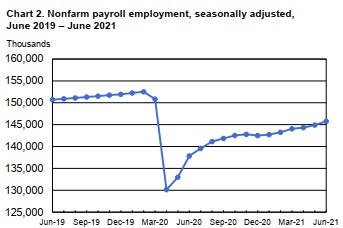The Recruiter’s View: Candidates Continue to Drive the Growing Job Market and Retention is Equally Important as Recruitment
Over the past few years, recruiters in the executive and managerial space have been observing a shift from an employer-driven market to a largely candidate-driven market. As this trend continues, new data indicates that improved confidence in the labor market and the availability of more job opportunities are creating an environment where top performers are more willing to change companies to fill newly created roles and vacancies from resignations. While this may be encouraging to prospective employers, current employers will need to place equal emphasis on employee retention strategies as they do on their recruitment efforts. Recruiters who responded to the most recent MRINetwork Recruiter Sentiment Study provide advice to employers who seek to remain attractive to employees and potential new hires.

“The competition for leadership talent is brutal right now. There is tremendous pressure to attract new talent and hold on to those already employed,” said a recruiter responding to the study. According to the report, in the first half of 2014, 81 percent of recruiters described the talent market as candidate-driven, up 25 percentage points from the first half of 2012.
The executive and managerial market continues to be candidate-driven, because of growing talent shortages due to skill gaps. Companies in most industries and geographic regions are now in growth mode, leaving top performers at a strong advantage, with multiple job offers to consider and the ability to reject less desirable work agreements. According to the study, 31 percent of recruiters say the top reason that great candidates continue to refuse job offers is because they are accepting offers with other companies. Disappointing compensation is on the rise, with 26 percent of recruiters listing this as the second most common reason that job offers are turned down.
MRINetwork recruiters provide the following insight about rejected job offers:
- More than ever, highly-skilled, top-performing candidates are in demand.
- Candidates have more options than they have had in years. Yet clients still want to give low-ball offers.
- Candidates are often turned off when companies do not keep the process moving, making the closing process all the more difficult if it gets to the offer stage.
- Counteroffers are still a common reason for offers being turned down, in which most candidates receive substantially more money and a promotion from their current employer.
With more top performers on the move, the candidate-driven market points to several things:
- Leveraging employer branding is not just about selling the company and the job opportunity, it is about the overall impression left by the entire recruitment process. “If a company appears to be disjointed in its branding, saying one thing but doing another, candidates will be turned off,” says an MRINetwork recruiter.
- A streamlined hiring process is critical to avoid losing top candidates. One recruiter notes, “Time is the enemy when recruiting exceptional talent, because … the longer the process goes on, the less likely the candidate will be around to take the offer.”
- Salary and benefit packages need to be aggressive, not simply market-competitive, to entice “A” players who have several job options at their disposal.
While the study results demonstrate that hiring trends are highly favorable towards top performers in the executive and managerial space, recruitment and retention will continue to be ongoing challenges for overall hiring as the economy recovers and the job market expands.






